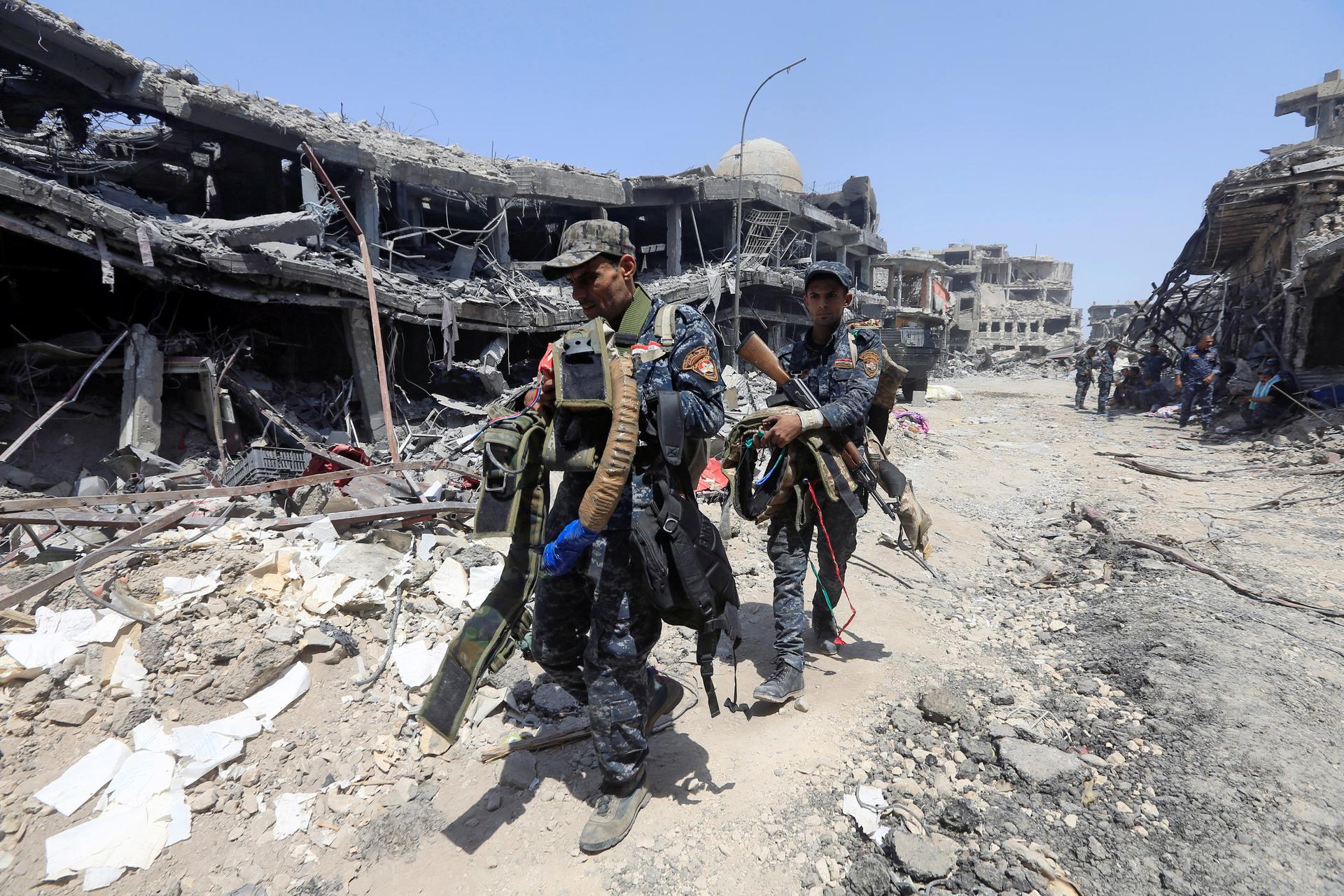Members of Iraqi Federal police carry suicide belts used by ISIS militants in the Old City of Mosul.
Editor’s note: This story was originally published on July 24, 2017. To listen to the latest interview, scroll down to the section near the bottom, labeled, "Update Jan. 18, 2018."
The city of Mosul has been retaken by Iraqi forces, and victory has been declared over ISIS.
But thousands of people are presumed dead, close to a million have been driven out of their homes, and nearly half of Iraq’s second-largest city lies in ruins.
Although ISIS fighters are mostly gone, the mines and explosives they’ve left behind still pose a major threat. Some estimates say it could take a decade before Mosul is cleared.
Pehr Lodhammar, the project manager of the United Nations Mine Action Service (UNMAS) in Iraq, agrees with that assessment. He’s worked to dismantle mines and explosives around the world for 27 years but calls the situation in Mosul unique.
“I personally have never seen anything like Iraq when it comes to the density of contamination, and the types of different improvised explosive devices,” Lodhammar said.
ISIS fighters have placed thousands of improvised explosive devices, or IEDs, in rows that go on for miles outside the city. The city is also littered with hand grenades, unexploded artillery, pressure plates and complex booby-traps. Solomon Black, a program manager at the State Department's Office of Weapons Removal and Abatement, told The Washington Post that reports on the ground say that many of the explosive devices have been planted around key infrastructure in the city, 90 percent of which is damaged, adding to the difficulty of clearance.
The approximately 40-member UNMAS team in Iraq is focusing on stability, Lodhammar says. They have a list of 255 tasks — to do with critical infrastructure like power plants, schools and hospitals — that need to be cleared and restored “so that people are encouraged to return to Mosul, and so people can return.”
It’s a daunting task with many variables.
An area suspected to contain explosives needs to be secured. UNMAS field operators travel in armored vehicles with armed escorts, who set up a perimeter and keep watch while they work.
Then comes the survey, or checking the location for explosive contamination. Once it’s been determined that there is an explosive device at the site, it needs to be cleared.
That’s never simple, but it is easier to train how to dismantle explosives that are mass-produced, Lodhammar says. “You know what to expect — a land mine is a land mine.”
The sheer variety of IEDs also makes things more expensive. Most operators have previous military experience disarming bombs, but sometimes the booby traps are so complicated that specialists are required, Lodhammar says, and it takes more time and money to engage their services.
Operators learn to “expect the unexpected and prepare for the worst,” Lodhammar says. It’s a lesson that seems all the more necessary in Mosul.
“You can never get used to it. You have to wake up every day, and go to work and focus because you never know what you're going to face,” he said. “And obviously, there's no room for mistakes. You can’t go back — if you make a mistake it might lead to someone getting killed, or someone getting injured, et cetera.”
It may be a decade or more before Mosul is free of mines and explosives, but Lodhammar is hopeful that UNMAS’s work clearing explosive devices, training Iraqi military and police and educating residents will help the city get back on its feet much sooner.
Update: Jan. 18, 2018
The World checked in with Lodhammer nearly six months later. He says UNMAS teams are now focused on clearing mines and IEDs from western Mosul and Mosul’s Old City, which they gained access to in November.
“The scope is so complex,” he says. “Our teams are going to one location to deal with one piece of explosives. And in going there, that community will report another five explosive hazards in the area.”
Lodhammar says the estimate still holds — 10 years until Mosul is fully cleared of hidden explosives — but he thinks there’s been “massive progress” in clearing streets and critical infrastructure.
“That is what our work is about — it is about getting people back to their homes, and that's what's driving myself and my staff every day.”
